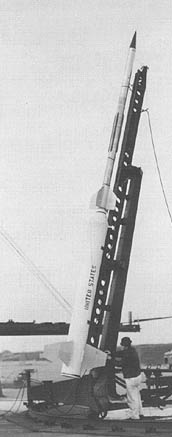
A sounding rocket or rocketsonde, sometimes called a research rocket or a suborbital rocket, is an instrument-carrying rocket designed to take measurements and perform scientific experiments during its sub-orbital flight. The rockets are used to launch instruments from 48 to 145 km above the surface of the Earth, the altitude generally between weather balloons and satellites; the maximum altitude for balloons is about 40 km and the minimum for satellites is approximately 121 km. Certain sounding rockets have an apogee between 1,000 and 1,500 km, such as the Black Brant X and XII, which is the maximum apogee of their class. Sounding rockets often use military surplus rocket motors. NASA routinely flies the Terrier Mk 70 boosted Improved Orion, lifting 270–450-kg (600–1,000-pound) payloads into the exoatmospheric region between 97 and 201 km.

The Dragon is a two-stage French solid propellant sounding rocket used for high altitude research between 1962 and 1973. It belonged thereby to a family of solid-propellant rockets derived from the Bélier, including the Centaure, the Dauphin and the Éridan.
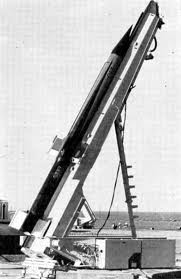
Centaure was a two-stage French sounding rocket consisting of a Venus first stage and a Belier second stage. It belongs to a family of solid-propellant rockets consisting of the Belier, Centaure, Dragon, Dauphin, and Eridan.

Salto di Quirra is a restricted weapons testing range and rocket launching site near Perdasdefogu on Sardinia.
It is the largest military range in Italy, composed of 12000 hectares of land owned by the Italian Ministry of Defence and one of the largest in operation within the European Union. Birth defects and cancer in the area have been blamed on weaponry used at the site.
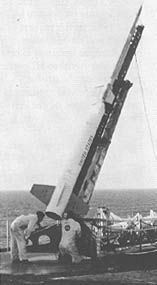
The Nike Apache, also known as Argo B-13, was a two-stage sounding rocket developed by Aerolab, later Atlantic Research, for use by the United States Air Force and NASA. It became the standard NASA sounding rocket and was launched over 600 times between 1961 and 1978.

The Flight Test Range (FTR) at Sonmiani Beach is a primary rocket launch site in Balochistan, approximately 50 kilometres (31 mi) west of Karachi, Sindh, Pakistan.

The Judi-Dart is a United States solid fueled sounding rocket .It was manufactured by Rocket power Inc .It belonged to the Loki rocket family. The Judi-Dart was launched 89 times between 1964 and 1970. The Judi-Dart has a length of 2.70 metres, a diameter of 0.08 metres, a maximum flight altitude of 65 kilometres and a launch thrust of 9000 newtons.
The Nike-Cajun was a two-stage sounding rocket built by combining a Nike base stage with a Cajun upper stage. The Nike-Cajun was known as a CAN for Cajun And Nike. The Cajun was developed from the Deacon rocket. It retained the external size, shape and configuration of the Deacon but had 36 percent greater impulse than the Deacon due to improved propellant. It was launched 714 times between 1956 and 1976 and was the most frequently used sounding rocket of the western world. The Nike Cajun had a launch weight of 698 kg (1538 lb), a payload of 23 kg (51 lb), a launch thrust of 246 kN (55,300 lbf) and a maximum altitude of 120 km (394,000 ft). It had a diameter of 42 cm and a length of 7.70 m. The maximum speed of the Nike-Cajun was 6,760 km/h (4,200 mph).
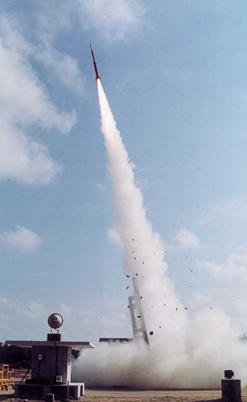
Thumba Equatorial Rocket Launching Station (TERLS),Thiruvananthapuram is an Indian spaceport established on 21 November 1963. Operated by the Indian Space Research Organisation (ISRO), it is located in Thumba, Thiruvananthapuram, Kerala, which is near the southwestern tip of mainland India, very close to Earth's magnetic equator. It is currently used by ISRO for launching sounding rockets.

The Space & Upper Atmosphere Research Commission, commonly referred to as SUPARCO, is the independent agency of the Government of Pakistan responsible for the national civilian space program.
The Suparco's spaceflight missions and tests were the sounding rocket launches of the Space Research Commission (SUPARCO) that were aimed at developing high-altitude rockets for Pakistan's space program. The exploration program provides opportunities for physics, atmospheric physics, investigations of the prevailing temperature gradients, wind velocities, and density of the upper atmosphere. Since its inception, over 200 sounding rockets were launched by Suparco from 1962 till its partial termination in 1972.
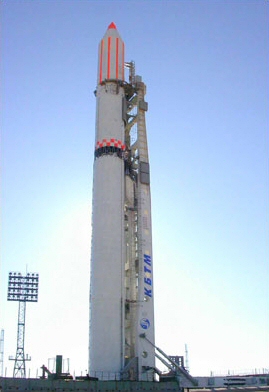
The Badr-B is the second spacecraft and the first Earth observation satellite launched into Earth orbit on 10 December 2001 at 09:15 by the SUPARCO — Pakistan's national space agency. Badr-B is a microsatellite, with a mass of ~70 kg, and contained the computerized system to conduct the studies on the gravity gradient. Badr-B is a research satellite to explore the upper atmosphere and the near space, and carried a large array of instruments for geophysical research.

This is a list of spaceflight related events which occurred in 1956.
Dr. Salim Mehmud, also known as Salim Mehmood, is a Pakistani rocket scientist and a nuclear engineer. He is the former chairman of Space and Upper Atmosphere Research Commission (SUPARCO). He has served as chief scientist at the Defence Science and Technology Organization. Currently, he is the chief Scientific and Technological Advisor at the Ministry of Communications of Pakistan.
Dr. Tariq Mustafa is a Pakistani mechanical engineer with a first class honors degree from London University specializing in nuclear and space technology. He led the establishment of Pakistan's Space and Rocket Technology Program and subsequently, served in high ranking positions in the Government of Pakistan as Federal Secretary of the Ministries of Defense Production, Science and Technology, Public Sector Industry, Petroleum and Natural Resources and Privatization. He is the founder and current Chairperson of Pakistan's National Paralympics Committee (PNPC), President of the South Asian Paralympics Committee and the Vice President of the Asian Paralympic Committee. His lifelong interests are reason, revelation and the future of humanity. He has been active in discourse about science and religion and is the author of The Case for God - Based on Reason and Evidence, not Groundless Faith. In September 2015, he has been appointed as a member of the Governing Council of the Institute for Religion in the Age of Science (IRAS).
The Cajun was an American sounding rocket developed during the 1950s. It was extensively used for scientific experiments by NASA and the United States military between 1956 and 1976.

Rohini is a series of sounding rockets developed by the Indian Space Research Organisation (ISRO) for meteorological and atmospheric study. These sounding rockets are capable of carrying payloads of 2 to 200 kilograms between altitudes of 100 to 500 kilometres. The ISRO currently uses RH-200, RH-300,Mk-II, RH-560 Mk-II and RH-560 Mk-III rockets, which are launched from the Thumba Equatorial Rocket Launching Station (TERLS) in Thumba and the Satish Dhawan Space Center in Sriharikota.

The Nike Smoke was a sounding rocket, part of a research project on the behavior of the horizontal winds in the upper atmosphere, developed by NASA in the 1960s based on the Nike booster. The goal was to obtain more accurate data on the behavior of these winds in order to guide the design of new vehicles particularly the Saturn family of vehicles. Nike Smoke used the release of titanium tetrachloride at altitude to create a smoke trail at altitude. The release created a white smoke trail which when photographed from two cameras situated 10–12 miles from the launch site and 90 degrees apart. Comparison of the photographs allowed winds aloft to be calculated in both direction and velocity.
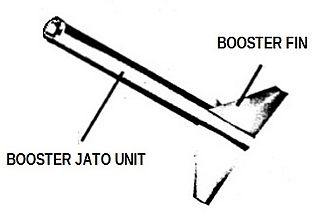
The Nike stage or Nike booster, a solid fuel rocket motor, was created by Hercules Aerospace for the Nike Ajax (M5) Nike Hercules (M5E1). It was developed for use as the first stage of the Nike Ajax and Nike Hercules missiles as part of Project Nike.
